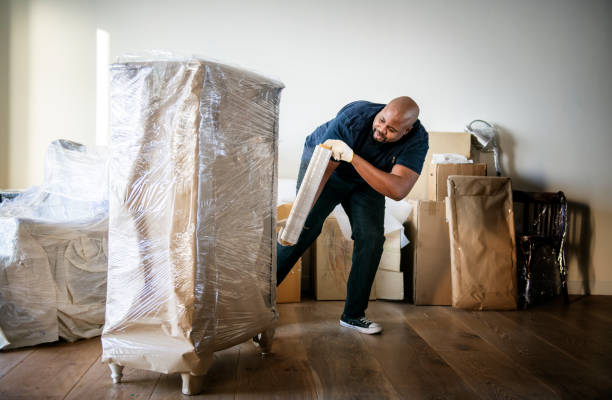
Welcome to the world of home office relocation!
Whether you’re moving across the street or the country, transitioning your workspace without disruption can seem like an insurmountable challenge.
But fear not! With the right guidance and planning, this daunting task can be manageable, even seamless. In this guide, we’ll walk you through the entire process, from the initial decluttering phase to the final setup in your new space.
So, are you ready to take the plunge and relocate your home office without missing a beat in your productivity?
Let’s get started!
Planning Your Home Office Move: Essential Tasks to Consider
Moving your home office requires careful planning to ensure a smooth transition.
Here’s a breakdown of the essential steps.
Quick Decluttering & Assessment:
Go through everything: Decide what you really need.
Use three boxes: “Keep,” “Donate/Sell,” and “Trash.”
Digital files: Delete junk and back up important stuff.
Check tech: Make sure it works.
Basic Space Planning:
Measure your new space: Know what fits.
Rough layout: Decide where your desk, etc., will go.
Check outlets: Make sure you have enough.
Simple Tech Check:
Test your computer and printer: Do they work?
Internet: Confirm you’ll have service.
Back up your data: Just in case.
Easy File Handling:
Box up papers: Label them clearly.
Keep important documents with you: Don’t pack them in a truck.
Digital files: Make sure they’re backed up.
Packing and Moving Your Home Office: Step-by-Step Guide
With your planning complete, it’s time to pack and relocate your home office efficiently.
Declutter and Streamline
Objective: Reduce the volume of items to be moved.
Actions:
Conduct a final review of all office items.
Dispose of unnecessary items: recycle, donate, or discard.
Minimize clutter to simplify packing and unpacking.
Prepare Your “Essentials” Box
Objective: Ensure immediate access to critical items upon arrival.
Contents:
Laptop and charger.
Important files (physical and digital backups).
Essential stationery (pens, notebooks).
Phone charger.
Personal medications or immediate needs.
Actions:
Pack this box separately and label it “Open First.”
Keep this box with you during the move.
Pack Electronics and Equipment
Objective: Protect sensitive equipment during transit.
Actions:
Original Packaging: Utilize original boxes for printers, monitors, and computers whenever possible.
Alternative Protection: If original boxes are unavailable, securely wrap items in bubble wrap or moving blankets.
Cables and Cords: Label and organize cables to prevent tangling.
Secure Packing: Pack electronics in sturdy boxes and fill empty spaces with packing material.
Label and Organize Boxes
Objective: Ensure efficient unpacking and setup in the new office.
Actions:
Clearly label all boxes with their contents and destination room.
Use color-coded labels for different categories.
Create an inventory list of all boxes.
Secure Transportation
Objective: Safely transport your office items to the new location.
Actions:
Professional Movers: Hire a reputable and insured moving company.
Self-Move: If moving yourself, rent a suitable vehicle and secure items properly.
Insurance: Verify the moving company’s insurance or obtain appropriate insurance for your items.
Keep your essential box in your vehicle.
Setting Up Your New Home Office: Tips for Quick Transition
After your move, creating a productive and comfortable workspace is key.
Choose the Ideal Location:
Desk Placement:
Preferably near a window for natural light.
Ensure adequate space for comfortable movement.
Ergonomics:
Invest in a supportive chair.
Use a desk with sufficient workspace.
Set Up Your Technology:
Internet Connection:
Establish a fast and stable internet connection.
Device Setup:
Connect all necessary devices (computer, printer, etc.).
Test all devices.
Organize Your Workspace:
Document Management:
Organize files and documents in a logical system.
Stationery and Supplies:
Arrange stationery and supplies for easy access.
Clutter Control:
Maintain a clutter-free environment to enhance focus.
Personalize Your Space:
Atmosphere:
Add personal touches like photos or plants.
Make the space feel welcoming.
Test and Adjust:
Spend some time working in the space.
Make any adjustments needed to increase comfort and productivity.
Relocating your home office doesn’t have to be a daunting task.
With careful planning, organization, and a systematic approach, you can transition your workspace smoothly and efficiently.
Remember to declutter, plan your space, pack smart, and set up your new office with functionality and comfort in mind.
Also, don’t forget to personalize your space to make it feel like your own.
By following these steps, you can ensure that your productivity doesn’t skip a beat during the move and that your new home office is a place where you can continue to thrive and succeed.
